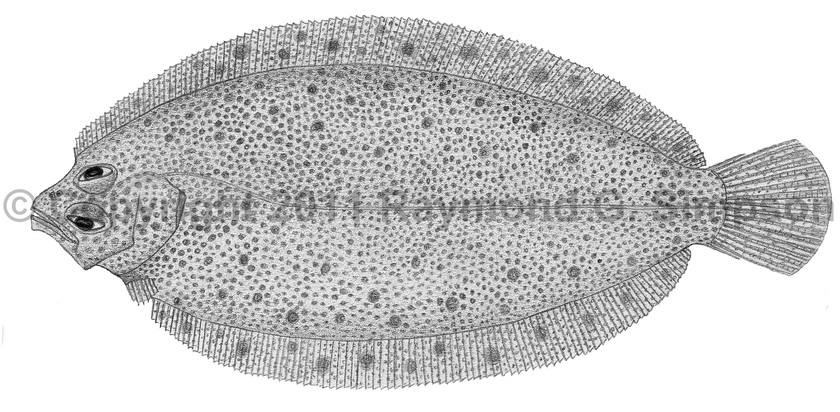
Common Name
Armless Flounder
Year Described
Günther, 1880
Identification
Data for Mancopsetta m. maculata:
Dorsal Fin: 105-128
Anal Fin: 89-105
Pectoral Fin: absent
Pelvic Fin: 6-7 on left side, 4-6 on right side
Gill Rakers: 14-20 (first arch)
Lateral Line Scales: 100-126
Vertebrae: 13-15 precaudal, 38-41 caudal; 52-55 total.
Body moderately elongate and ovoid (depth 1.8-2.6 in SL) with a straight head profile and shallowly curved dorsal/ventral profile. Head length 23-31% SL. Eye diameter greater than snout, but slightly less than law length. Posterior margin of jaw reaches the middle of lower eye. Teeth small, slender, and in a single row in both jaws. Anus along midline. Body scales with spinules that lay flat against body (1-3 spinules sticking out in juveniles and larvae). Dorsal fin low with origin anterior to upper eye. Anal fin low with origin posterior to pelvic base. Dorsal and anal fins not contiguous with caudal fin. Pectoral fins absent. Caudal fin small and rounded.
Color
Body light brown to greenish-yellow with numerous irregular dark blotches on body and fins. Sometimes uniformly dark in color. Blind side pale. Juveniles partially translucent with darker markings.
Size
Maximum size to 35cm SL.
Habitat
Continental shelf and slope from 132-1,115m, over soft bottoms.
Range
Southwestern Atlantic: Argentina to Tierra del Fuego, including the Falkland Islands. Larvae occasional in sub-Antarctic waters south of Chile. Also a disjunct subspecies (see notes) off South Georgia and Shag Rocks in the southern ocean.
References
Heemstra. 1990. Achiropsettidae. p. 408-413. In O. Gon and P.C. Heemstra (eds.). Fishes of the Southern Ocean. J.L.B. Smith Institute of Ichthyology, Grahamstown, South Africa.
Other Notes
Mancopsetta maculata antarctica is a subspecies from sub-Antarctic waters (S. Georgia and Shag Rocks) that broadly overlaps the meristic and morphometrics of M. maculata maculata, but is allopatric in distribution. It differs by having more lateral line scales (128-159), club-shaped gill rakers (vs. pointed), and two rows of teeth in the jaws (vs. one row).
Achiropsetta slavae (Andriashev, 1960) appears to be a post-larvae form of this species.